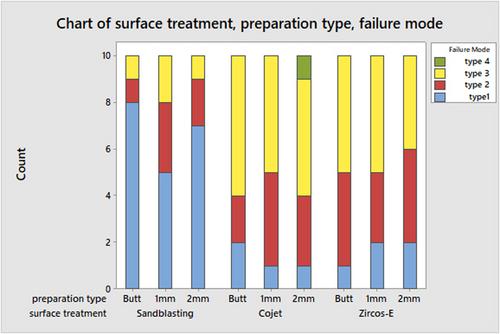The influence of Zircos-E® etchant, silica coating, and alumina air-particle abrasion on the debonding resistance of endocrowns with three different preparation designs
Abstract
Objectives
The study aimed to evaluate the debonding resistance of three different endocrown designs on molar teeth, using three different zirconia surface pretreatments.
Material and Method
Ninety human mandibular first molars were divided into three main groups: endocrowns without ferrule, with 1 mm ferrule, and with 2 mm ferrule. The subgroups were defined by their surface pretreatment method used (n = 15): 50 μm alumina air-particle abrasion, silica coating using 30 μm Cojet™ particles, and Zircos-E® etching. The endocrowns were fabricated using multilayer zirconia ceramic, cemented with self-adhesive resin cement, and subjected to 5000 thermocycles (5–55°C) before debonding. The data obtained were analyzed using a two-way ANOVA.
Results
All test specimens survived the thermocyclic aging. The results indicated that both the preparation design and the surface treatment had a significant impact on the resistance to debonding of the endocrowns (p < .001). The 2 mm ferrule followed by the 1 mm ferrule designs exhibited the highest debonding resistance, both were superior to the endocrown without ferrule. Zircos-E® etching and silica coating yielded comparable debonding resistance, which were significantly higher than alumina air-particle abrasion. All endocrowns demonstrated a favorable failure mode.
Conclusions
All designs and surface treatments showed high debonding resistance for a single restoration. However, ferrule designs with Zircos-E® etching or silica coating may represent better clinical options compared to the nonferrule design or alumina airborne-particle abrasion. Nonetheless, further research, including fatigue testing and evaluations with different luting agents is recommended.


 求助内容:
求助内容: 应助结果提醒方式:
应助结果提醒方式:


